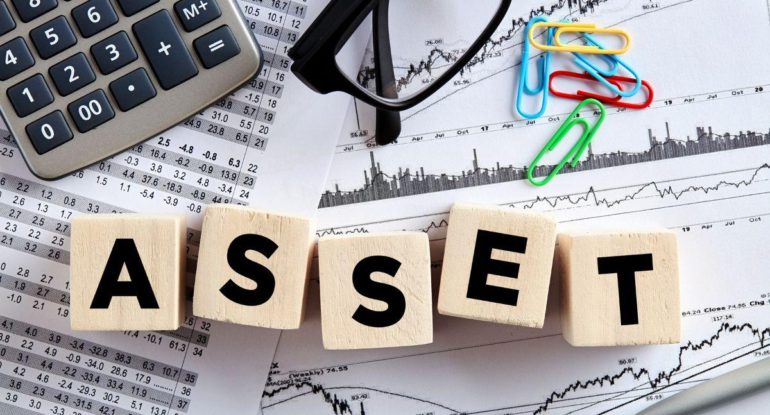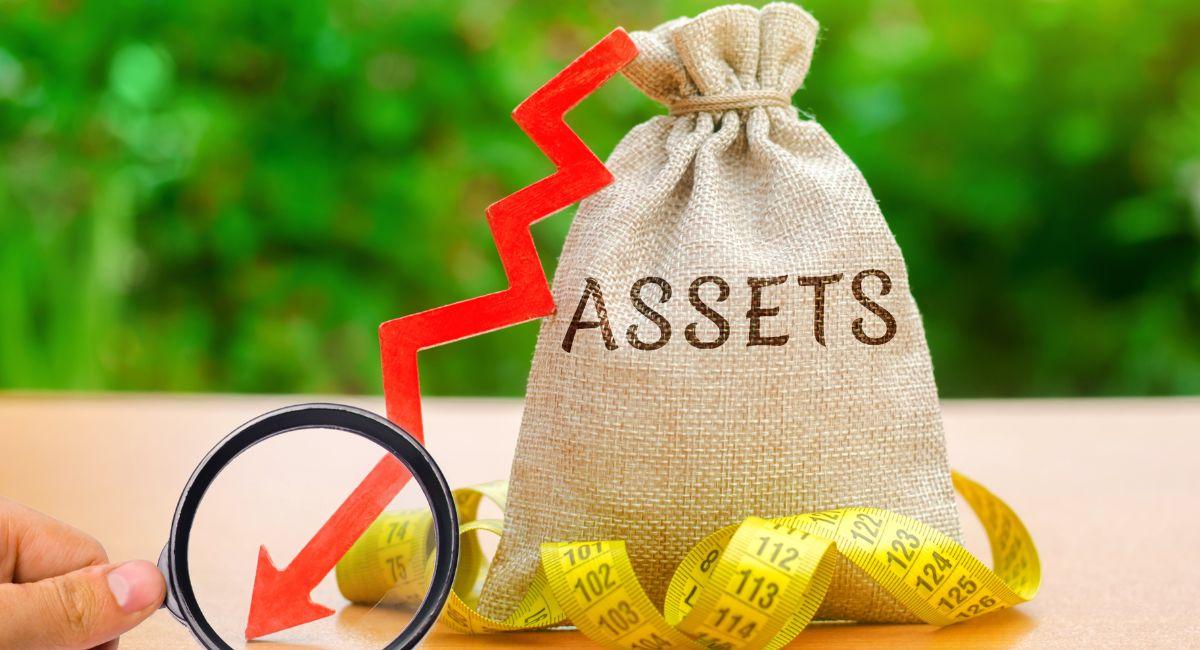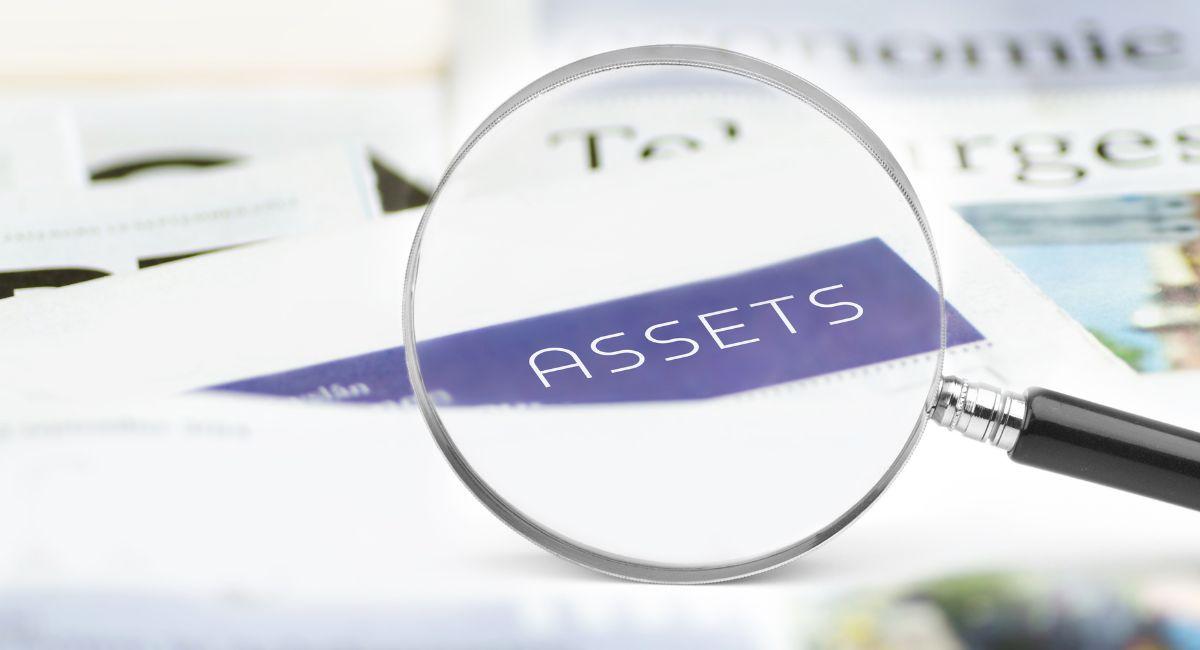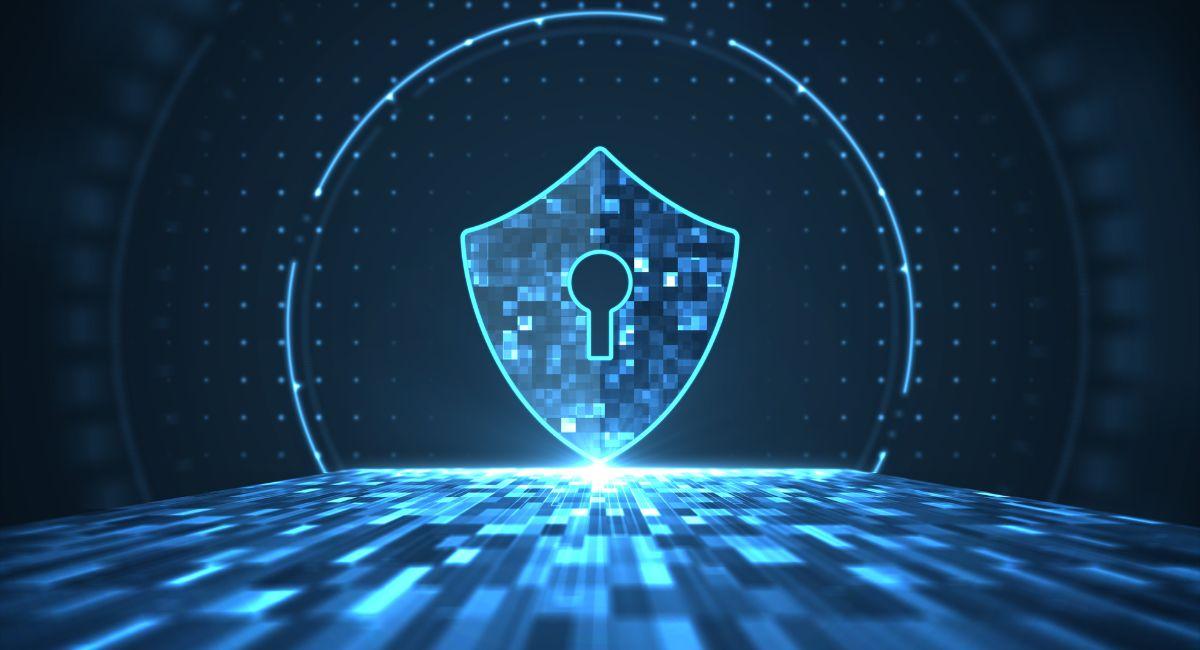What Is Real-World Asset And What Is The Role of Web3 Technology In Real-World Asset Protection

The advent of Web3 technology is not merely a shift in the paradigm of blockchain; it is a transformative force that extends its impact into safeguarding real-world assets. As we navigate the complex landscape of traditional asset protection, the emergence of Web3 introduces a new era characterized by decentralization, transparency, and heightened security. This article delves into the profound role that Web3 technology plays in the protection of real-world assets, exploring the implications for industries ranging from real estate to intellectual property.
What are real-world assets in the web3 world?

In the Web3 world, the concept of real-world assets takes on a new dimension, representing a transformative shift in the way we perceive, manage, and interact with tangible and intangible assets. Real-world assets in the context of Web3 extend beyond the traditional understanding, encompassing a wide range of physical and digital entities that are tokenized and managed on decentralized blockchain networks. Let’s delve into a vast exploration of what real-world assets mean in the Web3 paradigm:
1. Tokenization of Physical Assets: Real-world assets in the Web3 world often refer to physical entities that are tokenized on blockchain networks. Tokenization involves representing ownership or a share of an asset through blockchain-based tokens. Physical assets like real estate, art, and commodities can be divided into tradable tokens, enabling fractional ownership and facilitating more accessible investment opportunities.
2. Digital Twinning and Virtual Assets: Beyond physical assets, the Web3 world introduces the concept of digital twinning, where physical assets have corresponding virtual representations on the blockchain. These digital twins can include data, specifications, and provenance information associated with the physical asset. This ensures a comprehensive and transparent record of the asset’s lifecycle.
3. Intellectual Property and Digital Assets: Real-world assets in the Web3 space extend to intellectual property and various forms of digital assets. These may include patents, copyrights, trademarks, and digital content. Tokenization allows creators and owners to manage, protect, and monetize their intellectual property in a decentralized and transparent manner.
4. Decentralized Finance (DeFi) Instruments: Financial instruments, such as loans, bonds, and derivatives, can be tokenized on the blockchain, becoming real-world assets in the Web3 ecosystem. DeFi platforms leverage Web3 technology to create decentralized and programmable financial instruments, opening up new avenues for global investment and financial services.
5. Tokenized Securities: Traditional securities, such as stocks and bonds, can be tokenized on blockchain networks. These tokenized securities maintain the characteristics of traditional financial instruments but benefit from the efficiency, transparency, and accessibility provided by Web3 technology. This facilitates faster and more cost-effective trading while enhancing liquidity.
6. Supply Chain and Provenance Tracking: Real-world assets in the Web3 world extend to supply chain management, where blockchain is utilized to trace the provenance and authenticity of physical goods. From luxury goods to agricultural products, the transparency and immutability of blockchain ensure that the entire supply chain is visible and verifiable.
7. Real Estate Tokenization: Tokenization of real estate is a prominent example of real-world assets in the Web3 space. Through blockchain technology, properties can be divided into tokens, allowing for fractional ownership. This not only democratizes access to real estate investment but also introduces liquidity to traditionally illiquid markets.
8. Gaming Assets and Non-Fungible Tokens (NFTs): Virtual assets within the gaming industry, as well as unique digital collectibles, are considered real-world assets in the Web3 landscape. Non-fungible tokens (NFTs) represent ownership of these digital items, providing a secure and verifiable way for users to own and trade virtual assets.
9. Environmental and Carbon Credits: The Web3 world also incorporates real-world assets related to environmental sustainability. Carbon credits, for instance, can be tokenized on the blockchain to enable transparent tracking and trading of emissions reductions. This contributes to the development of sustainable and eco-friendly practices.
10. Smart Contracts as Asset Management Tools: Smart contracts play a pivotal role in managing and automating real-world assets in the Web3 world. These self-executing contracts can define the rules, conditions, and agreements related to asset ownership, transfers, and usage. Smart contracts enhance security, reduce the need for intermediaries, and streamline asset management processes.
Real-world assets in the Web3 world represent a broad and dynamic spectrum of physical and digital entities that are tokenized and managed on decentralized blockchain networks. This transformative shift holds the promise of increased accessibility, transparency, and efficiency across various industries, redefining the way we perceive, manage, and interact with assets in the digital age.
How does RWA tokenization work?

Real World Asset (RWA) tokenization is a process within the Web3 ecosystem that involves representing ownership and value of physical assets on blockchain networks through the use of tokens. This process allows traditionally illiquid assets, such as real estate, art, or commodities, to be converted into digital tokens, enabling fractional ownership, increased liquidity, and efficient trading. Let’s delve into a vast exploration of how RWA tokenization works:
1. Identification of Asset: The process begins with the identification of a real-world asset that is suitable for tokenization. This could include real estate properties, artworks, fine wines, or any other valuable physical asset. The asset should have a clear and established value, making it suitable for representation through digital tokens.
2. Legal and Regulatory Compliance: Before initiating the tokenization process, adherence to legal and regulatory frameworks is crucial. Each jurisdiction may have specific regulations governing the tokenization of real-world assets. The legal structure is designed to ensure that the tokenization process complies with existing laws and provides a clear framework for ownership and trading.
3. Asset Valuation: Accurate valuation of the asset is a critical step in the tokenization process. Valuation methods may vary based on the type of asset, but it is essential to establish a transparent and reliable valuation mechanism. Independent third-party appraisers or valuation experts may be involved in determining the fair market value of the asset.
4. Creation of Tokens: Once the asset is identified and valued, the next step involves creating digital tokens that represent ownership rights to a portion of the asset. These tokens are typically created on blockchain platforms that support token standards, such as ERC-20 or ERC-721 for Ethereum-based tokens. Each token corresponds to a fractional ownership stake in the real-world asset.
5. Smart Contracts and Ownership Rules: Smart contracts play a crucial role in RWA tokenization. These self-executing contracts are deployed on the blockchain to define the rules and conditions associated with ownership, transfer, and usage of the tokens. Smart contracts automate processes related to dividends, voting rights, and other governance aspects tied to the ownership of tokenized assets.
6. Offering and Sale of Tokens: Tokenized assets are usually offered for sale through Initial Token Offerings (ITOs) or Security Token Offerings (STOs). Investors can purchase these tokens, becoming fractional owners of the underlying real-world asset. The sale is facilitated through smart contracts, ensuring transparency, security, and compliance with regulatory requirements.
7. Investor Verification and KYC/AML Compliance: To comply with Know Your Customer (KYC) and Anti-Money Laundering (AML) regulations, investors interested in acquiring tokenized assets must undergo a verification process. This process involves confirming the identity of investors to prevent fraudulent activities and ensure compliance with legal requirements.
8. Secondary Market Trading: One of the key advantages of RWA tokenization is the creation of a secondary market for trading these tokens. Once the initial offering is complete, tokenized assets can be traded on various decentralized or regulated exchanges. This secondary market enhances liquidity and provides investors with the flexibility to buy or sell their fractional ownership stakes.
9. Asset Management and Governance: The ongoing management and governance of tokenized assets are facilitated through smart contracts and decentralized governance mechanisms. Token holders may have voting rights to make decisions regarding the asset, such as approving major renovations for a real estate property or selecting a new custodian for an artwork.
10. Dividends and Revenue Distribution: Token holders may receive dividends or revenue shares based on the performance of the underlying asset. Smart contracts automate the distribution of dividends, ensuring a transparent and fair process. This feature enhances the attractiveness of tokenized assets as investment opportunities.
RWA tokenization represents a groundbreaking evolution in the way we perceive and invest in real-world assets. By leveraging blockchain technology, fractional ownership becomes accessible, liquidity is enhanced, and traditional barriers to entry are lowered. As the Web3 ecosystem continues to mature, RWA tokenization is poised to revolutionize the investment landscape, providing new avenues for both issuers and investors.
📆 Save the date, folks! 📌
The next #PlayDapp Talks is happening on Jan 25th 🤭
Get ready for another round of excitement and insights.
See you there! 😉$PLA #cryptotalk #Crypto #Web3 pic.twitter.com/MxgrJeoJse— PlayDapp (@playdapp_io) January 4, 2024
How Web3 Technology Helps In Real-World Asset Protection?
 Decentralization and Immutable Ledgers:
Decentralization and Immutable Ledgers:
At the core of Web3’s impact on real-world asset protection lies the principle of decentralization. Traditional asset protection mechanisms often rely on centralized entities such as banks, governments, or legal systems. Web3 disrupts this paradigm by leveraging decentralized blockchain networks, which provide an immutable and transparent ledger for recording ownership and transactions.
Blockchain’s distributed ledger ensures that asset information is not stored in a single location but is replicated across a network of nodes. This decentralized approach eliminates single points of failure, reducing the risk of fraud, corruption, or unauthorized alterations. Real-world assets, such as real estate titles or intellectual property records, can benefit from this enhanced level of security and transparency.
Tokenization and Fractional Ownership:
Web3 introduces the concept of tokenization, allowing real-world assets to be represented as blockchain-based tokens. This tokenization revolutionizes ownership structures, enabling fractional ownership and enhancing liquidity. Through the division of assets into tradable tokens, individuals can invest in high-value assets like real estate without the need for substantial capital, democratizing access to asset ownership.
In the real estate industry, for instance, tokenization enables investors to own fractions of a property, unlocking liquidity in traditionally illiquid markets. This not only broadens investment opportunities but also facilitates easier and more efficient transfer of ownership.
Smart Contracts for Secure Transactions:
Smart contracts, a cornerstone of Web3 technology, play a crucial role in automating and securing transactions related to real-world assets. These self-executing contracts execute predefined conditions without the need for intermediaries, ensuring trustless and tamper-resistant agreements.
In the context of real-world asset protection, smart contracts facilitate secure and transparent transactions. For example, when purchasing a property, a smart contract can automatically execute the transfer of ownership upon meeting predefined conditions, such as payment confirmation. This reduces the risk of fraud, streamlines the transaction process, and eliminates the need for intermediaries, saving time and resources.
Enhanced Security Through Decentralized Identity:
Web3 technology places a strong emphasis on decentralized identity solutions, giving individuals greater control over their personal information. In the context of real-world asset protection, this translates into a more secure and privacy-focused system for verifying ownership and conducting transactions.
Decentralized identity ensures that users control access to their personal data, reducing the risk of identity theft or unauthorized access. This is particularly relevant in industries where sensitive information, such as property ownership records or intellectual property details, requires robust protection.
Cross-Chain Collaboration and Interoperability:
Web3’s commitment to interoperability is a game-changer for real-world asset protection. Different blockchain networks can seamlessly communicate and transact through cross-chain collaborations, ensuring that asset information is not confined to a single blockchain.
Interoperability enables a more comprehensive and interconnected view of asset ownership and transactions. In a globalized economy, where assets may traverse multiple jurisdictions, this cross-chain collaboration ensures that the protection mechanisms extend seamlessly across diverse blockchain networks.
Challenges and Considerations in Implementing Web3 Technology for Real-World Asset Protection:

1. Regulatory Compliance:
Challenge: Regulatory frameworks vary across jurisdictions, and the integration of Web3 technology for real-world asset protection must navigate these diverse and often evolving regulatory landscapes. Achieving compliance with existing financial, securities, and property laws can be complex.
Considerations: Collaborating with regulatory authorities, legal experts, and policymakers is crucial to ensure that tokenization processes adhere to local regulations. A proactive approach to staying informed about regulatory updates and engaging in transparent communication with regulators helps mitigate compliance risks.
2. Legal Frameworks:
Challenge: Existing legal structures may not fully accommodate the decentralized and borderless nature of Web3 technology. Traditional legal systems are designed for centralized governance, posing challenges when it comes to enforcing smart contracts and resolving disputes within a decentralized framework.
Considerations: Establishing legal frameworks that recognize and accommodate the unique characteristics of Web3 technology is essential. This may involve advocating for legal reforms, drafting smart contracts with legally enforceable clauses, and fostering collaboration between legal experts and blockchain developers.
3. Standardization of Tokenization Protocols:
Challenge: The absence of standardized protocols for tokenization can lead to interoperability issues and hinder the seamless transfer of assets across different blockchain networks. Lack of standards may also contribute to uncertainties in the valuation and recognition of tokenized assets.
Considerations: Collaborative efforts within the blockchain community are needed to establish and adhere to tokenization standards. Industry-wide initiatives, open-source developments, and engagement with standards-setting organizations contribute to the creation of a consistent and interoperable tokenization framework.
4. Smart Contract Security:
Challenge: While smart contracts automate various processes, they are susceptible to vulnerabilities, bugs, and exploits. Flaws in smart contract code can lead to financial losses, disputes, and compromise the security of tokenized assets.
Considerations: Rigorous testing, code audits, and the use of secure coding practices are essential to enhance smart contract security. Collaborating with cybersecurity experts, engaging in continuous code reviews, and implementing formal verification tools contribute to the creation of robust and secure smart contracts.
5. Educational Awareness:
Challenge: The adoption of Web3 technology requires a shift in mindset and an understanding of its implications. Lack of awareness and education among stakeholders, including legal professionals, investors, and regulators, can impede the broader acceptance of decentralized technologies.
Considerations: Educational initiatives, workshops, and awareness campaigns are vital for informing stakeholders about the benefits, risks, and implications of Web3 technology. Collaboration between the blockchain community, educational institutions, and industry associations can contribute to widespread understanding and acceptance.
6. Cross-Border Considerations:
Challenge: Real-world assets often have cross-border implications, and the integration of Web3 technology must address the complexities of international legal frameworks, tax regulations, and jurisdictional issues.
Considerations: Engaging with legal experts with expertise in international law, collaborating with regulatory bodies across jurisdictions, and adopting solutions that facilitate compliance with multiple legal systems contribute to addressing cross-border challenges.
7. Privacy Concerns:
Challenge: The transparency inherent in blockchain can conflict with privacy requirements, especially concerning sensitive real-world asset information. Striking a balance between transparency and privacy is crucial to address concerns related to data protection.
Considerations: Implementing privacy-focused technologies, such as zero-knowledge proofs or privacy-preserving smart contracts, can address privacy concerns. Ensuring compliance with data protection regulations and providing users with control over their personal information enhances the privacy features of Web3 applications.
8. Market Liquidity:
Challenge: The liquidity of tokenized assets in secondary markets depends on market participants’ willingness to buy and sell. Achieving sufficient liquidity is crucial for the success of tokenized assets.
Considerations: Strategies such as creating incentives for market makers, fostering liquidity pools, and developing mechanisms to enhance market depth contribute to addressing liquidity challenges. Initiatives that encourage investor confidence and participation are also essential.
Addressing these challenges and considerations is paramount for the successful integration of Web3 technology into real-world asset protection. A collaborative approach involving regulatory bodies, legal experts, blockchain developers, and industry stakeholders is necessary to create a framework that ensures compliance, security, and widespread adoption. As the Web3 ecosystem continues to evolve, proactive measures and ongoing collaboration will contribute to overcoming these challenges, paving the way for a more secure, transparent, and decentralized future for real-world asset protection.
Also, read- A Complete Guide To Web3 Proof Collective’s World
Conclusion:
Web3 technology is poised to redefine the landscape of real-world asset protection, introducing a new era of decentralization, transparency, and enhanced security. Through decentralized ledgers, tokenization, smart contracts, decentralized identity, and cross-chain collaboration, Web3 addresses long-standing challenges in safeguarding real-world assets.
As industries ranging from real estate to intellectual property embrace the transformative power of Web3, the potential for increased efficiency, reduced fraud, and broader access to asset ownership becomes evident. The journey towards a future where Web3 underpins the protection of real-world assets is not just a technological evolution; it’s a shift towards a more inclusive, secure, and transparent global economy.



























































